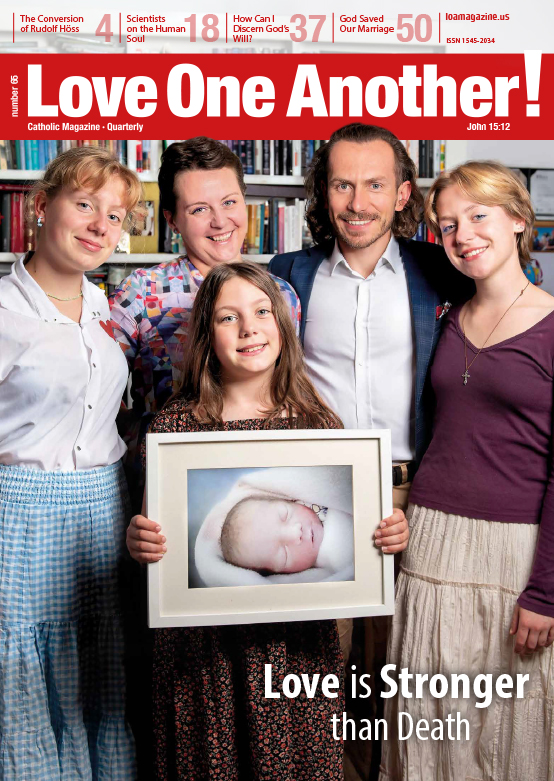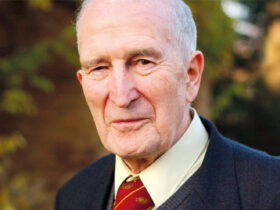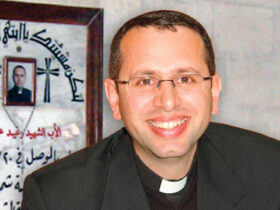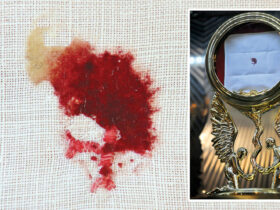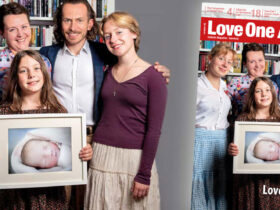The life mission of dr. Wanda Błeńska
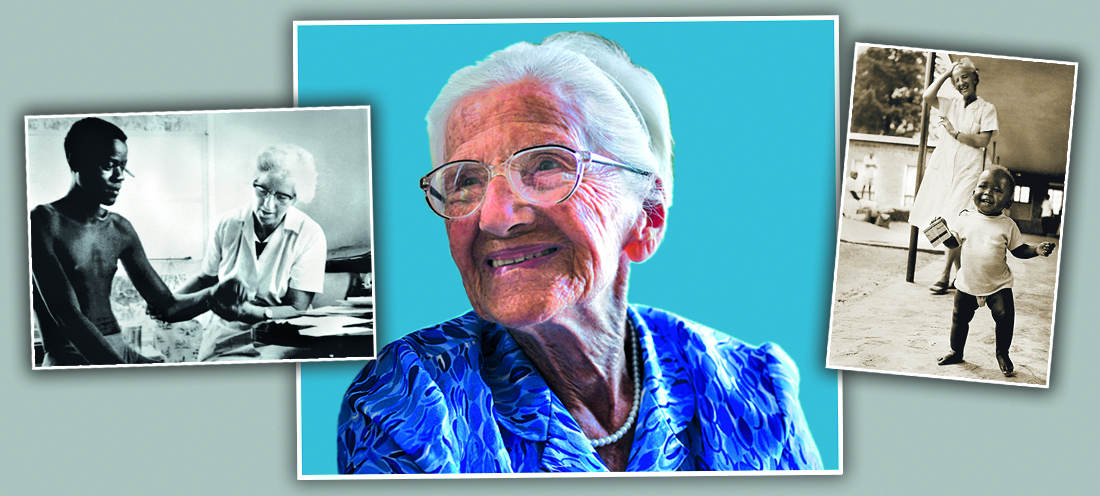
She greeted her patients with a smile. She would touch their bodies without using gloves. And when asked about the most effective medicine, she would answer that it is vitamin L, that is to say, love. This is how Wanda Błeńska was – a Polish doctor who dedicated her life to the sick of Uganda.
It began as a dream
The circumstances of Wanda Błeńska’s birth did not particularly pres- age her long 103-year life. When she entered the world in 1911 in Poznań (Poland), she weighed barely 2.25 kilograms (4 lbs. 15 oz.), and there was talk of her impending death. Later things were better, albeit she kept a fragile physique throughout her life. As a child she would often say how she wanted to be a missionary doctor. Years later Błeńska would regard this desire, confirmed through subsequent choices and hard work, as the basis of her calling. “I always told young people: if you have some brilliant ideas, nurture them. Don’t let them fade. Don’t abandon them just because they seem to be impossible or difficult to achieve. You have to nurture your dreams!” In 1928 Błeńska’s dreams were turning into reality when she enrolled at the Poznań University Medical School. At the time she was not quite 17 years old, and was the youngest student in her class.
In her studies she tried to never miss a class. She liked to study at the cemetery “because it was the only place that was peaceful.” She tended to associate with the other girls, and the older boys treated her protectively. And even though there were more than a few young men who caught her fancy, neither then nor later did any of them manage to become her husband. There was one simple reason: she didn’t love anyone more than her desire to work in missions. She saw this as her life’s calling.
The forge of mission enthusiasts
From the beginning of her studies Błeńska took great care that her dream to become a doctor in the missions shouldn’t perish in the quagmire of other pressing duties. In her first year she joined the University Missionary Club. Together with other members she organized meetings with missionaries, sent packages to Africa, and read literature on the subject. As time went by, she herself gave lectures, traveled to symposia, and became the editor of the first missionary magazine in Poland, Annales Missiologicae. The work at the club was demanding but brought ‘Wandeczka’ – as they called her at that time – joy and fulfillment. Years later she would say: “enthusiasm for work is gained in one’s youth, at school, and in one’s studies. The enthusiasm accumulates and should grow to such an extent that it will endure late into life. If you start work with this enthusiasm, this is a blessing from God.”
The young Błeńska also attended theme-specific retreats, Masses, and adoration. From the knowledgeable supervisors of the club she learned that missions are based on two principles: work and prayer, and that both are equally important. This understanding would later prove to be essential to the success of her mission in Africa. At difficult times she would not forget that she was merely God’s tool, and he expected her to give of her very best, but that the results of her work depended not only on her, but also on God.
The seed must die
1934 brought a great turning point in Błeńska’s life. She completed her doctoral degree and… didn’t go off on a mission! Why not? She was an unmarried laywoman, and in those days, since the working conditions on missions were extremely difficult, women like her were not sent to positions in Africa. So she moved to Toruń where her father and brother lived (her mother had died when Wanda was two years old), and began to work in the hospital there. What was interesting was that Wanda didn’t lose hope that the dark night would end, and the African sun would shine on her one day. Even at that time she was looking around for work in the various sections of the hospital that could provide her useful experience for working in the missions. She also worked in the laboratory and took additional medical courses.
In 1939 history stepped into the course of Wanda’s life. The Second World War was beginning, and the young doctor became involved in the Polish underground Home Army. Under the noms de guerre “Grażyna” and “Szarotka” she would go secretly to other houses and tend the sick. With time she rose to the rank of second lieutenant and became commander of a women’s unit. On her name day, June 23, 1944, she was arrested and spent three months in prison. Even there she didn’t break down, but entrusted herself to God. She was brave. “We had a saying that: ‘your body is not made of glass, it won’t shatter.’ You always have to find the joyful moments, even in difficult times.” Every day in her cell she would organize the singing of hymns, and the praying of litanies, finishing with the magnificent patriotic hymn God, Save Poland [pol. Boże, coś Polskę]… After her release from prison and the end of the war, she returned to work in hospitals in Toruń and Gdańsk.
Wind in the sails
Towards the end of the 1940’s Błeńska’s path towards fulfilling her dream about missions gained steam. Paradoxically, the deteriorating health of her brother, who ended up in Hannover after the war, was helpful to her. Wanda, who hurried to visit him with help, had sneaked across the border illegally (hidden in a coal storage shed on a ship!) in order to get into Germany, and couldn’t return to Communist Poland. So she remained in the West, and when her brother’s health improved, she pursued courses in tropical medicine in Germany and England. Thanks to the newly acquired experience, and the new acquaintances she made there, the long-awaited mission to Africa became a possibility for her in 1950.
In a memento dated February 9, 1950 Błeńska wrote: “This afternoon at 4 o’clock I departed from London. […] Aside from physical fatigue I am at peace in my heart, which is filled with a particular quiet, serene joy – I am simply com- pletely happy – as one who has nothing but yet possesses everything.” She spent a month in transit to Africa. On the ship she read books about leprosy, and developed a plan to spend five years in Uganda. She ended up living there for 43 years.
Off to a rough start
“The beginning was the most difficult, the first 15 years”, she would say in her later years. In the Center for Leprosy Treatment in Buluba (a village on Lake Victoria where she ultimately settled) she was alone and there was no end of work. Twenty-two thousand patients waited for treatment, and Błeńska was the only doctor in the area. Some of them required surgery for which she didn’t have the right experience. On top of this were the primitive working conditions, and the lack of equipment, medicines, and qualified personnel. However, Błeńska neither complained nor allowed herself to become discouraged. She knew that Africa in the 1950’s was no place for delicate ladies.
From the beginning she worked without sparing herself. She would sleep five hours a night, start her day with Mass, and work all day with a dinner break, followed by just 20 minutes rest. In the evenings she would do lab tests or read literature, usually professional. In time the effect of her efforts – in addition to hundreds of patients treated – would be: modern hospital buildings, a training center for doctors and nurses, a qualified medical team, and testing on a vaccine for leprosy… Błeńska’s efforts were appreciated by naming medical facilities after her as well as granting her Ugandan citizenship and papal distinctions. But the thing that united her to the hearts of the Africans more than anything was her way of interacting with the patients.
Doctor of soul and body
“If I want to be a good doctor, I have to love my patients. That means: to give them time and care and to continually improve my qualifications. It’s very important to infuse this with love… Yes, that’s what’s most important – relating to the patient. And that attitude should be the same everywhere. Because people are suffering everywhere, and they recover notably more quickly if they trust their doctor” Błeńska said. Her heart was open to the patients. She greeted them with a smile, showed her concern, and avoided any hint of superiority or indifference. She applied unusual methods. When handling the lepers’ bodies, she would not wear gloves; this showed them that if they didn’t have open wounds, normal standards of hygiene would suffice to prevent transmission of the disease. She showed patients pictures of before and after treatment in order to offer hope to those who were suffer- ing that many of the effects of leprosy could be completely cured.
With her human approach to her patients Błeńska proclaimed the Gospel of the human dignity of the elderly and sick, about whom and to whom St. John Paul II said: “they teach us that weakness is a creative part of human life, and that suffering can be accepted without sacrificing dignity. No disease, no injury, no disability can ever deprive you of your dignity as children of God, and brothers and sisters of Christ.”
Dr. Błeńska treated patients not only with her heart. From the beginning she worked to develop her competence as a leprologist. She worked to deepen her knowledge about leprosy, to keep up with the professional literature, and to raise her qualifications. She conducted laboratory tests under spartan conditions. During her vacations in Poland she visited hospital wards where she learned more about surgery and running a laboratory. She attended international conferences, delivered speeches, travelled to other centers for treatment of leprosy, among others, in India, including Fr. Marian Żelazek’s center in Puri, and Mother Teresa’s center in Calcutta. She did everything she could to learn to treat the patients more effectively. Her activities evoked admiration, especially considering the conditions she worked under.
To be a missionary
Dr. Błeńska will also be remembered in Uganda as a person who incorporated prayer into her work. When she saw that a patient was dying, or that his condition was particularly serious, she would ask her staff and other patients to pray for him. She didn’t have to wait long for the Africans to respond – they gladly joined in spontaneous devotions at the hospital. Conscious of the responsibility of her work, Błeńska herself prayed often. Before surgery, washing her hands, she would pray the Litany to the Sacred Heart of Jesus. She hung a picture of Our Lady of Częstochowa in the operating room, entrusting the success of the operation to Mary. She wasn’t afraid to witness publicly to her faith: “I always say: I’ll never know how many times I healed through good treatment, and how many times through prayer.”
Years later she would say that in her spiritual life she followed a path that had begun with a shallow entrustment of her petitions to God without waiting for His answer, but later she came to rely on being close to God and listening to Him. She also recognized that without the faith that brings joy, being a missionary misses the point. “Those who go out [on missions] must be happy. […] if one doesn’t experience joy, one can’t share it with others. Christian joy proceeds from faith and so its source is in Christ.”
Faith in Christ also sheds light on the mystery of suffering, which Dr. Błeńska encounters daily. To quote ones of the popes, “The Cross of Christ is the most perfect explanation of the sense of suffering, as well as its value in life and in history. The Cross is a challenge to give love in response to love. In God’s works we are not always able to find the answer to the question of why suffering marks the paths of our lives. However, thanks to faith, we can attain a certainty that it is love which is at work in which the entire enormous range of the crosses, large and small, move in the direction of unifying themselves completely with the one Cross” (St. John Paul II).
The “White Granny” on a motorcycle
Błeńska’s mission would not have been so productive if she hadn’t loved Africa with her whole heart: Africa’s culture, its dance, its music, and its singing. She participated enthusiastically in local customs and events. She lived humbly but didn’t complain about the inconveniences. She said: “The testimony of one’s life and sharing the fate of those with whom one works are very important aspects of mission.” She was very happy riding her motorcycle, and doing that as a “white lady” was quite sensational in the neighborhood. Her phrase “Archangel Raphael, I will paddle, but you rescue me!” shouted out loud on Lake Victoria after an aggressive hippopotamus struck her kayak, became part of her legend.
Despite all her love for Africa, Błeńska remained faithful to Poland and its ideals. She never forgot the Polish language, she was interested in news from her homeland, and read Polish literature. She acknowledged that at difficult moments she was uplifted by Polish poetry. Working at the microscope, she would recite favorite verses from memory. When she left Uganda, she left behind 25 chests full of books.
Farewell to Africa
“She is the ambassador of the lay missionaries” was the way John Paul II spoke of her during his visit to Uganda in 1993. As the “Mother of the lepers” she is the model for doctors undertaking missions. Immersed in God, she shared her faith, her knowledge, and her heart with the residents of Uganda for 43 years. At 83 years of age she bade her final farewell to her charges in 1994. She spent the final 20 years of her life delivering speeches and promoting the missions. She died in Poznań on November 27, 2014, at the age of 103. She was also awarded many honors and recognitions for her life’s work. However, at celebrations she would repeat: “I don’t see it as a personal merit that I loved my work with the lepers so much. It was just the fulfillment of my youthful dreams. It was a GIFT, for which I am grateful to God.” Her motto? “One should trust in God, trust in one’s Guardian Angel, and trust whoever is around. Beyond that it’s enough to simply care for your dreams, and never accept »NO« for an answer.”
Sources: J. Molewska, M. Pawelec, Wanda Błeńska. Dream fullfilled, Poznań 2011; A. Andrzejak, J. Różański, Medicine and Evangelization. Conversations with Wanda Błeńska, Poznań 1996; A. Andrzejak, M. Nawrocka, A. Wąsikowska-Trawińska, In the footsteps of Dokta, Poznań 1997.
Do you like the content published on our website?
Support us!
